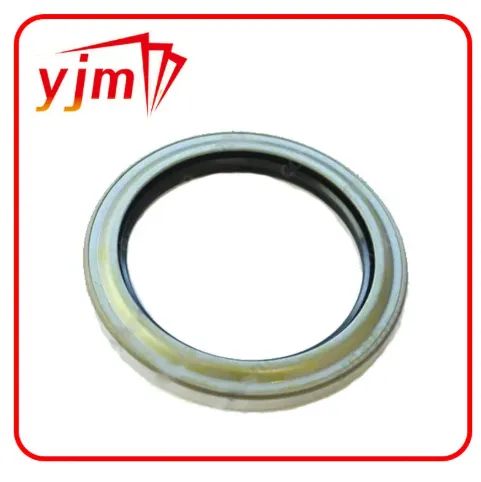Understanding Automotive Oil Seals: Essential Components for Engine and Shaft Protection
Automotive oil seals are crucial yet often overlooked components in vehicles. They play a key role in ensuring optimal performance, preventing contamination, and maintaining the integrity of engine and shaft systems. From auto oil seals to specialized car engine oil seals, these parts are vital for modern vehicles' reliability and longevity. This article explores the different types of automotive oil seals, their applications, and their importance in vehicle maintenance.

What Are Auto Oil Seals and Why Are They Important?
Auto oil seals are mechanical devices designed to close the spaces between stationary and moving components in a vehicle. Their primary function is to retain lubricants and exclude contaminants such as dirt, dust, and moisture. In automotive systems, seals are used extensively in engines, gearboxes, axles, and pumps.
There are several types of seals, including:
Radial shaft seals: Commonly found in rotating machinery, these seals are used around shafts and provide a tight, consistent barrier.
Axial or face seals: Designed for low-speed applications, these are used when sealing against a flat surface perpendicular to the shaft.
Oil seals are generally made from durable materials like nitrile rubber, silicone, or polytetrafluoroethylene (PTFE), chosen based on the working environment—such as heat, pressure, or contact with automotive fluids.
Failing oil seals can result in oil leaks, reduced performance, contamination of lubricants, and ultimately, mechanical breakdowns. Regular inspection and timely replacement are critical for maintaining a vehicle’s health.
The Role of Automotive Shaft Seals in Powertrain Integrity
Automotive shaft seals are specifically designed to manage the interface between rotating shafts and stationary parts. These seals are used in various components such as crankshafts, camshafts, axles, and gearboxes.
Key functions of shaft seals include:
Preventing oil from leaking out of engines and transmissions.
Protecting bearings from exposure to dirt and debris.
Reducing wear and tear by ensuring a constant supply of clean lubricant.
A crankshaft seal, for example, is a type of automotive shaft seal that sits at the front and rear ends of the engine's crankshaft. It keeps oil inside the engine while allowing the crankshaft to rotate freely.
Shaft seals are exposed to constant movement and high temperatures, which makes them vulnerable to degradation over time. If a shaft seal wears out, it can lead to oil leakage, increased friction, overheating, and potential engine failure.
Proper installation and quality material selection are crucial for shaft seal performance. Many modern vehicles use double-lip shaft seals that offer enhanced protection and longevity.
Car Engine Oil Seals: Guarding the Heart of the Vehicle
Car engine oil seals serve a vital role in sealing various parts of the engine, ensuring that engine oil remains contained and uncontaminated. These seals are found at critical junctures in the engine, such as the:
Crankshaft (both front and rear)
Camshaft
Valve covers
Timing cover
Without functioning engine oil seals, oil would leak from these areas, leading to low oil levels, increased engine wear, and the risk of a complete breakdown.
Common signs of worn-out car engine oil seals include:
Oil spots under the vehicle
Burning oil smell
Excessive engine smoke
Warning lights related to oil pressure
Routine engine maintenance should include checking the condition of all car oil seals, especially in older vehicles or those exposed to harsh driving conditions.
Replacing engine oil seals requires precision and should typically be handled by trained professionals. Using OEM-quality or better replacements ensures compatibility and durability, helping to extend the life of the engine.
Choosing and Maintaining the Right Engine Oil Seals for Your Vehicle
When selecting car oil seals, it is essential to consider factors such as:
Compatibility with your vehicle make and model
Material quality suited to the operating temperature and pressure
Seal design, such as single-lip or double-lip configurations
Brand reputation and warranty
Whether you're dealing with a car engine oil seal or a shaft seal, sourcing from reputable manufacturers ensures optimal performance and reliability.
To maintain engine oil seals:
Regularly check for leaks or visible wear.
Change engine oil and filters at recommended intervals.
Avoid using low-quality lubricants that may degrade rubber or synthetic seal materials.
Ensure proper alignment and torque during seal installation.
Proactive maintenance not only prevents major engine issues but also saves money in the long run by avoiding costly repairs due to oil loss and contamination.
From auto oil seals to automotive shaft seals and engine oil seals, each plays a critical role in the efficient and safe operation of a vehicle. These small components protect vital systems from contamination, ensure lubrication integrity, and help maintain the mechanical health of the engine and drivetrain. By understanding their importance and ensuring proper maintenance, vehicle owners can prevent leaks, extend the lifespan of their cars, and enjoy smoother driving experiences.
-
High-Quality Seal 12x22x5 for Industrial & Automotive Use | YJM Seal
Izindaba Nov.25,2025
-
Seal 12x20x5: Precision Radial Shaft Seals for Industrial Reliability
Izindaba Nov.24,2025
-
Seal 12x18x5: Essential Guide to Specifications, Applications & Vendors
Izindaba Nov.24,2025
-
Understanding Seal 12 20 5: Applications, Specifications & Industry Insights
Izindaba Nov.23,2025
-
Durable Oil Seal 85x110x12 – Reliable Sealing Solutions for Industry
Izindaba Nov.23,2025
-
Durable and Precise Oil Seal 75x95x10 for Efficient Machinery | YJM Seal
Izindaba Nov.22,2025
-
Durable Oil Seal 75x100x10 for Reliable Industrial Performance | YJM Seal
Izindaba Nov.22,2025
Izigaba zemikhiqizo















